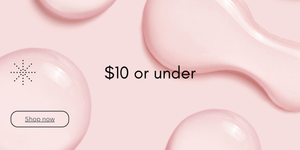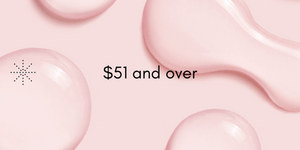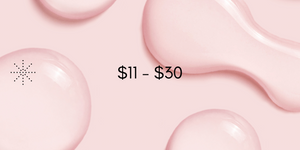The Science Behind Popular K-Beauty Ingredients: What Works and Why
K-beauty, short for Korean beauty, has taken the global skincare industry by storm. Known for its innovative formulations, multi-step routines, and emphasis on achieving healthy, glowing skin, K-beauty has become a staple for skincare enthusiasts around the world. What sets K-beauty apart is not just its packaging or trends, but the science behind the ingredients it uses. With a focus on natural, effective components, K-beauty products are often based on centuries of skincare traditions combined with modern scientific research. This article delves into some of the most popular K-beauty ingredients, exploring their efficacy and the science behind why they work.
1. Snail Mucin: The Secret to Repair and Hydration
One of the most iconic ingredients in K-beauty is snail mucin, often found in serums, moisturisers, and sheet masks. Snail mucin is packed with a variety of beneficial components such as hyaluronic acid, glycolic acid, zinc, and proteins like collagen and elastin. The science behind snail mucin suggests that it helps in promoting skin regeneration and healing, making it ideal for those with damaged or aging skin.
Hyaluronic acid, a key component of snail mucin, is a powerful humectant, meaning it draws moisture from the environment into the skin. This helps in keeping the skin hydrated and plump. Glycolic acid, on the other hand, is an exfoliant that aids in the removal of dead skin cells, revealing a smoother, more radiant complexion. Additionally, zinc in snail mucin has anti-inflammatory properties that can help with conditions like acne or skin irritation. Together, these elements work to soothe, hydrate, and repair the skin.

2. Centella Asiatica: The Healing Herb
Another highly praised ingredient in K-beauty is Centella Asiatica, a medicinal herb known for its potent healing properties. It has been used for centuries in traditional medicine, particularly in Asia. Centella is rich in saponins, flavonoids, and amino acids, which contribute to its calming, hydrating, and reparative effects on the skin.
From a scientific perspective, Centella Asiatica is revered for its ability to stimulate collagen production. Collagen is a protein that gives skin its structure and firmness, and as we age, its production decreases. By encouraging collagen synthesis, Centella can help to reduce the appearance of fine lines and wrinkles. Furthermore, its anti-inflammatory properties make it effective in soothing sensitive skin and promoting wound healing. Many K-beauty products containing Centella Asiatica are used for acne-prone skin, as the ingredient can reduce redness and irritation while promoting skin recovery.
3. Propolis: Nature’s Antioxidant Powerhouse
Propolis, a resin-like substance made by bees, has been gaining popularity in K-beauty for its impressive antioxidant, anti-inflammatory, and antimicrobial properties. It is a complex mixture of beeswax, tree resins, and essential oils, and it contains polyphenols, flavonoids, and vitamins, making it a powerhouse for protecting and nourishing the skin.
Propolis is particularly beneficial for those with sensitive or acne-prone skin, as it helps to calm irritation and reduce inflammation. The polyphenols in propolis neutralise free radicals, which are unstable molecules that can damage skin cells and accelerate the aging process. By combating oxidative stress, propolis helps to protect the skin from environmental aggressors such as pollution and UV rays. Additionally, its antimicrobial properties make it effective in preventing acne and blemishes, as it inhibits the growth of bacteria on the skin.
4. Green Tea: The Antioxidant and Anti-Inflammatory Agent
Green tea is another K-beauty favourite that has garnered scientific attention due to its antioxidant-rich composition. Green tea is packed with polyphenols, specifically epigallocatechin gallate (EGCG), which has potent anti-inflammatory and antioxidant properties. These compounds are known to fight oxidative stress and reduce inflammation, making green tea a staple ingredient in products designed for sensitive or acne-prone skin.
Scientific research has shown that EGCG in green tea helps to protect the skin from UV damage, reducing the risk of sunburn and premature ageing. Furthermore, it has been shown to regulate sebum production, which can help with oily skin and acne. Green tea also has calming effects, making it a great option for individuals dealing with redness, irritation, or conditions like rosacea. Its soothing properties are the result of its ability to suppress the production of pro-inflammatory cytokines in the skin.
5. Hyaluronic Acid: The Ultimate Moisturiser
Hyaluronic acid is perhaps one of the most well-known ingredients in skincare, and for good reason. It is a naturally occurring substance in the skin that helps retain moisture, keeping the skin plump, hydrated, and youthful. Its popularity in K-beauty can be attributed to its ability to hold up to 1000 times its weight in water, making it an incredibly effective moisturiser.
The science behind hyaluronic acid is simple yet powerful. As we age, the natural production of hyaluronic acid in the skin decreases, leading to dryness, fine lines, and loss of elasticity. By incorporating hyaluronic acid into skincare routines, the skin is able to retain moisture more effectively, reducing the appearance of fine lines and promoting a smooth, dewy complexion. Additionally, hyaluronic acid helps to support the skin’s barrier function, preventing water loss and protecting the skin from external irritants.
6. AHA/BHA: Chemical Exfoliants for Smooth Skin
Exfoliation is a crucial step in any skincare routine, and K-beauty often uses alpha hydroxy acids (AHAs) and beta hydroxy acids (BHAs) as gentle yet effective chemical exfoliants. AHAs, such as glycolic acid and lactic acid, work on the skin’s surface to dissolve dead skin cells, revealing a brighter, more even complexion. BHAs, such as salicylic acid, penetrate deeper into the pores to clear out dirt, oil, and dead skin cells, making them ideal for oily and acne-prone skin.
The science behind AHAs and BHAs lies in their ability to break down the bonds between dead skin cells, facilitating the shedding of the skin’s outer layers. Regular use of these exfoliants can help to smooth the skin’s texture, fade dark spots, and prevent clogged pores that lead to acne. BHAs, in particular, are known for their anti-inflammatory and antibacterial properties, which make them effective in controlling breakouts and promoting clearer skin.
7. Mugwort: The Soothing Herb
Mugwort, a plant used in traditional Korean medicine, has recently become popular in K-beauty for its anti-inflammatory, soothing, and detoxifying properties. Mugwort is rich in antioxidants, vitamins, and minerals that help to calm irritated skin and reduce redness.
The active compounds in mugwort, including flavonoids and terpenoids, are believed to work by promoting circulation and detoxifying the skin. This herb is often found in products targeting sensitive skin or conditions like eczema and psoriasis. It helps to calm inflammation and irritation while supporting the skin's natural healing processes. Mugwort is also thought to help balance the skin’s oil production, making it useful for individuals with combination or oily skin.
Conclusion
The success of K-beauty is not just a trend; it is rooted in the science behind its ingredients. From snail mucin’s regenerative properties to Centella Asiatica’s collagen-boosting effects, each ingredient is chosen for its proven ability to enhance skin health. The use of natural yet scientifically backed components, such as green tea, propolis, and hyaluronic acid, reflects the K-beauty philosophy of achieving healthy, glowing skin through effective and gentle methods. As K-beauty continues to evolve, the focus on science-driven skincare will undoubtedly lead to even more innovative products that cater to the diverse needs of global consumers. Whether you’re looking for hydration, anti-aging, or acne solutions, there is likely a K-beauty ingredient that can help you achieve your skincare goals.










Leave a comment